
John Dickson Carr was an American author of detective stories, who also published using the pseudonyms Carter Dickson, Carr Dickson, and Roger Fairbairn.
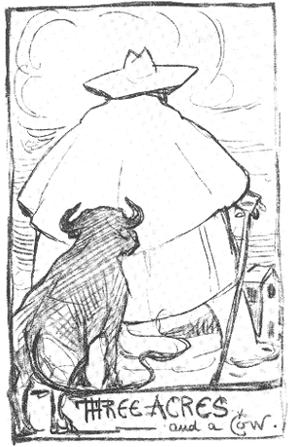
Dr Gideon Fell is a fictional character created by John Dickson Carr. He is the protagonist of 23 mystery novels from 1933 through 1967, as well as a few short stories. Carr was an American who lived most of his adult life in England; Dr. Fell is an Englishman who lives in the London suburbs.
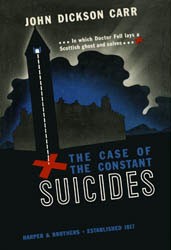
The Case of the Constant Suicides, first published in 1941, is a detective story by John Dickson Carr. Like much of Dickson Carr's work, this novel is a locked room mystery, in addition to being a whodunnit. Unlike most of the other Dr. Fell novels, this story has a high humour level, reminiscent of the Henry Merrivale works.
Henri Bencolin is a fictional detective created by John Dickson Carr. He was Carr's first series detective, appearing in five "locked-room" and "impossible crime" mystery novels in the 1930s, and four short stories that appeared even earlier. In later decades, Carr did not return to the Bencolin character, but instead focused on creating English sleuths such as Dr. Gideon Fell and Sir Henry Merrivale.
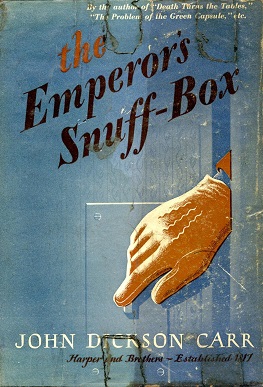
The Emperor's Snuff-Box is a non-series mystery novel (1942) by mystery novelist John Dickson Carr. The detective is psychologist Dr. Dermot Kinross.
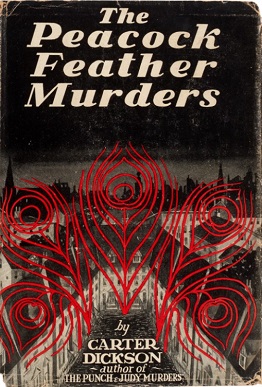
The Ten Teacups, is a locked room mystery by American mystery writer John Dickson Carr, writing as Carter Dickson. It features the series detective Sir Henry Merrivale, working with Scotland Yard's Chief Inspector Humphrey Masters.
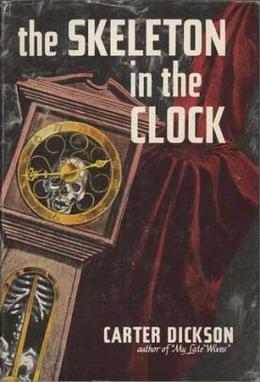
The Skeleton in the Clock is a 1948 mystery novel by the American writer John Dickson Carr, who published it under the name of Carter Dickson. It is a whodunnit and features the series detective Sir Henry Merrivale and his long-time associate, Scotland Yard's Chief Inspector Humphrey Masters.

The Problem of the Wire Cage, first published in 1939, is a detective story by John Dickson Carr featuring his series detective Gideon Fell. This novel is a mystery of the type known as a locked room mystery.
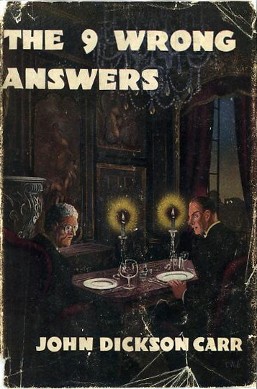
The Nine Wrong Answers, first published in 1952, is a detective story by John Dickson Carr which does not feature any of his series detectives. It is an expansion of Carr's 1942 radio play "Will You Make A Bet With Death".

The Sleeping Sphinx, first published in 1947, is a detective story by John Dickson Carr which features Carr's series detective Gideon Fell. This novel is a mystery of the type known as a whodunnit.

The Dead Man's Knock, first published in 1958, is a detective story by John Dickson Carr which features Carr's series detective Gideon Fell. This novel is a mystery of the type known as a locked room mystery.

The Black Spectacles, first published in 1939, is a detective story by John Dickson Carr featuring his series detective Gideon Fell. This novel is a mystery of the type known as a locked room mystery.

Till Death Do Us Part, first published in 1944, is a detective story by John Dickson Carr featuring his series detective Gideon Fell. This novel is a mystery of the type known as a locked room mystery. Carr considered this one of his best impossible crime novels.
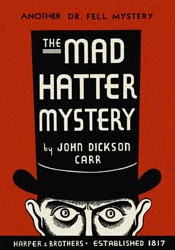
The Mad Hatter Mystery, first published in 1933, is a detective story by American writer John Dickson Carr, featuring his series detective Gideon Fell. This novel is a mystery of the type known as a whodunnit.
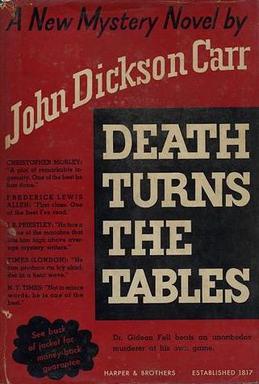
Death Turns the Tables (1941), also published under the title The Seat of the Scornful, is a detective novel by John Dickson Carr. The novel is a mystery of the type known as a whodunnit. The story features Carr's series detective Gideon Fell, though not Carr's signature plot device of a locked-room mystery.

The Arabian Nights Murder, first published in 1936, is a detective story by John Dickson Carr featuring his series detective Gideon Fell. This novel is a mystery of the type known as a whodunnit.

In Spite of Thunder, first published in 1960, is a detective story by John Dickson Carr which features Carr's series detective Gideon Fell. It marked Carr's 40th book in 30 years. This novel is a mystery of the type known as a locked room mystery.

The Blind Barber, first published in October 1934, is a detective story by American writer John Dickson Carr, featuring his series detective Gideon Fell. It is a mystery novel of the type known as a whodunnit. This novel is generally felt to be the most humorous of Dr. Fell's adventures, somewhat echoing the farcical later adventures of Carr's Sir Henry Merrivale.

Dr. Fell, Detective, and Other Stories, is a mystery short story collection written by John Dickson Carr and first published in the US by Lawrence E. Spivak in 1947.
















